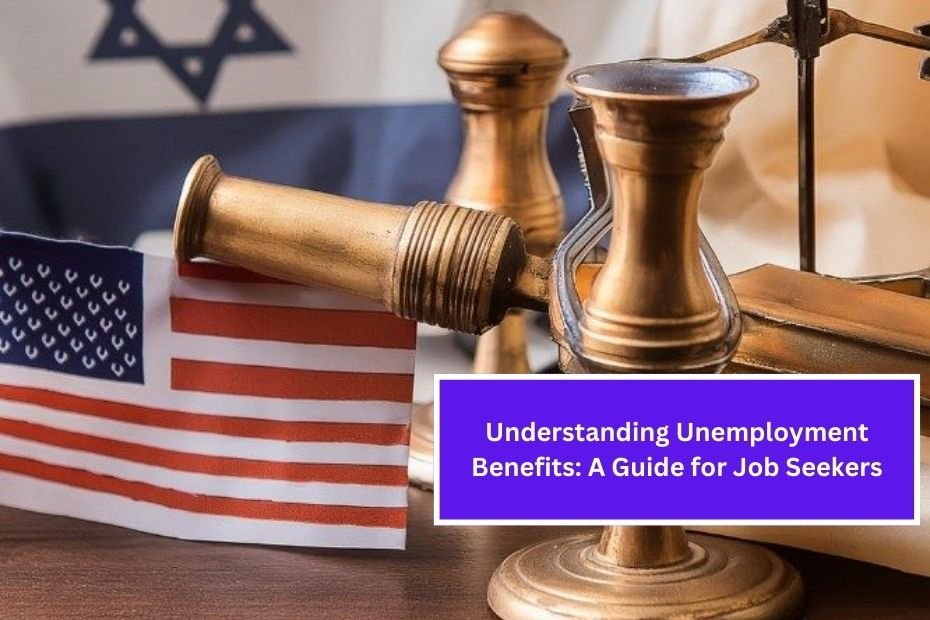Losing a job can be a stressful experience, and many people may not know what to do next. One important resource available to those who are unemployed is unemployment benefits. This guide will help you understand what unemployment benefits are, how to apply for them, and what you can expect if you qualify.
Introduction
Unemployment benefits are financial payments made to individuals who have lost their jobs through no fault of their own. These benefits can provide crucial support as you search for new employment. In this article, we’ll break down the key aspects of unemployment benefits in simple terms, making it easier for job seekers to navigate this system.
What Are Unemployment Benefits?
Unemployment benefits are designed to help people who are out of work and looking for a job. These benefits can help cover basic expenses such as rent, groceries, and utilities while you search for new employment. The amount and duration of benefits can vary based on several factors, including your previous earnings and the state where you live.
Types of Unemployment Benefits
- Regular Unemployment Insurance (UI): This is the standard form of unemployment benefits available to most workers who have lost their jobs.
- Pandemic Unemployment Assistance (PUA): This program was introduced during the COVID-19 pandemic to assist workers who are not usually eligible for regular UI, such as gig workers and freelancers.
- Extended Benefits (EB): In certain circumstances, states may offer extended benefits for those who have exhausted their regular unemployment benefits.
- Emergency Unemployment Compensation (EUC): This temporary program provides additional weeks of benefits when unemployment rates are high.
Who Qualifies for Unemployment Benefits?
To qualify for unemployment benefits, you generally need to meet several requirements:
- Employment History: You must have worked for a certain period and earned enough wages during that time.
- Job Loss: You must be unemployed through no fault of your own. This means you may have been laid off or your job ended due to circumstances beyond your control (like company downsizing).
- Availability and Willingness to Work: You must be actively seeking work and be available to take a job if offered.
- State Requirements: Each state has specific eligibility requirements, so it’s essential to check your state’s rules.
How to Apply for Unemployment Benefits
Applying for unemployment benefits can vary by state, but here are the general steps you can follow:
Step 1: Gather Required Information
Before applying, gather the following information:
- Social Security number
- Driver’s license or state ID number
- Employment history (including names, addresses, and phone numbers of previous employers)
- Dates of employment
- Reasons for job loss
Step 2: Visit Your State’s Unemployment Office Website
Most states allow you to apply for unemployment benefits online. Go to your state’s unemployment office website to find the application. If you prefer, you can also apply by phone or in person, depending on your state’s options.
Step 3: Complete the Application
Follow the instructions to complete the application form. Be honest and provide accurate information. Mistakes or omissions can delay your benefits.
Step 4: Submit Your Application
Once you’ve completed the application, submit it according to your state’s guidelines. You should receive a confirmation of your application, either immediately or shortly after.
Step 5: Follow Up
After submitting your application, it’s essential to check the status regularly. Your state may contact you for additional information, so respond promptly to any requests.
What to Expect After Applying
Once you’ve applied for unemployment benefits, here’s what you can expect:
- Processing Time: It usually takes a few weeks to process your application. During this time, the unemployment office may verify your employment history and eligibility.
- Determination Letter: After your application is processed, you will receive a determination letter. This letter will inform you whether you qualify for benefits and the amount you will receive.
- Payment Schedule: If approved, you will receive benefits on a regular schedule, typically weekly or biweekly. Payments can be made through direct deposit or a prepaid debit card, depending on your state.
- Job Search Requirements: Many states require you to actively search for work while receiving benefits. This may include applying for jobs, attending job fairs, or enrolling in job training programs. You may need to provide proof of your job search efforts.
How Much Will You Receive?
The amount of unemployment benefits you receive will depend on several factors, including your previous earnings and the state where you worked. Each state has its own formula for calculating benefits, but here are some general points to keep in mind:
- Weekly Benefit Amount: This is the amount you will receive each week. Most states set a maximum limit on how much you can receive.
- Duration of Benefits: Typically, unemployment benefits last for 26 weeks, but this can vary by state and may be extended during times of high unemployment.
- Additional Benefits: Some states may offer additional benefits for dependents or provide supplementary payments during high unemployment periods.
Common Questions About Unemployment Benefits
1. What if I was fired or quit my job?
If you were fired for misconduct or quit without a valid reason, you might not qualify for benefits. However, if you can prove that your termination was unfair or if you quit for a good cause (like unsafe working conditions), you may still be eligible.
2. Can I work part-time and still receive benefits?
In many states, you can work part-time and still receive unemployment benefits. However, your earnings may reduce the amount of your benefits. You will need to report any income you earn while receiving benefits.
3. What happens if my benefits are denied?
If your application for unemployment benefits is denied, you have the right to appeal the decision. The determination letter will include information on how to file an appeal. Be sure to act quickly, as there are deadlines for filing.
4. How do I report earnings while on benefits?
Most states require you to report any income earned during the week, including part-time work or freelance jobs. This information is usually reported when you file your weekly or biweekly claim online or by phone.
Tips for Job Seekers
While waiting for unemployment benefits and searching for a new job, consider the following tips to improve your chances of success:
1. Update Your Resume
Ensure your resume is current and highlights your skills and experiences. Tailor it for each job you apply for to match the requirements of the position.
2. Network
Reach out to friends, family, and former colleagues. Let them know you are looking for work, as they may know of job openings or can provide referrals.
3. Use Online Job Boards
Websites like Indeed, LinkedIn, and Glassdoor can help you find job openings. Set up alerts for new job postings in your field.
4. Prepare for Interviews
Practice common interview questions and prepare your answers. Research the companies you’re applying to, so you can ask informed questions during the interview.
5. Consider Temporary Work
If you’re struggling to find a full-time position, consider temporary or part-time work. This can help you earn some income while gaining new skills and experience.
Conclusion
Unemployment benefits can be a vital support system for individuals who find themselves without work. Understanding how to apply for benefits, what to expect, and how to make the most of your time while searching for a new job is essential.
While the process may seem overwhelming, taking it step by step can help you navigate it successfully. Remember to keep a positive mindset and be proactive in your job search. With patience and persistence, you can find new opportunities and get back to work.

